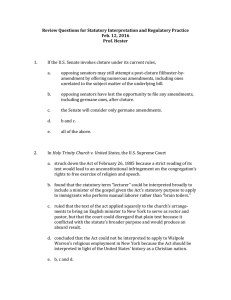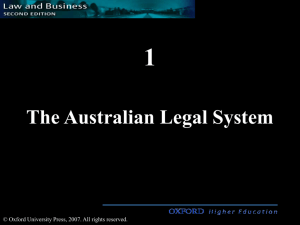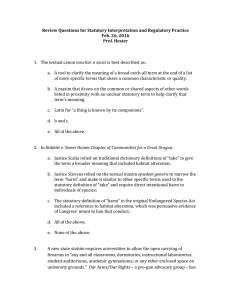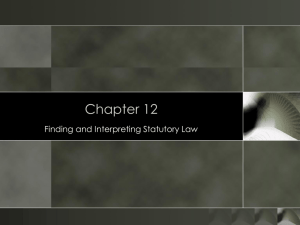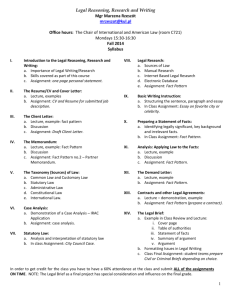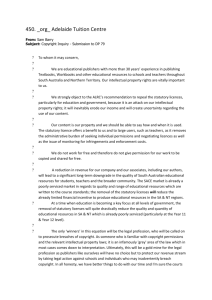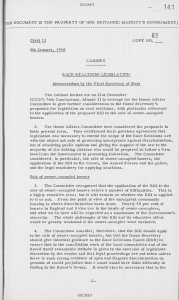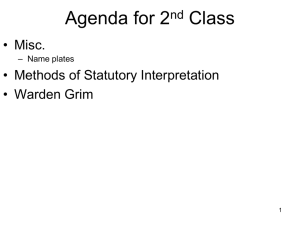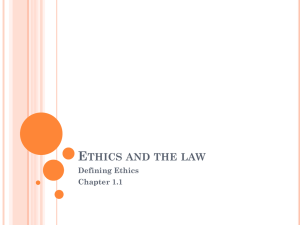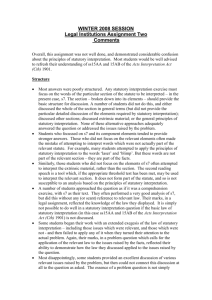Common Law, Statutory Law and Administrative
advertisement
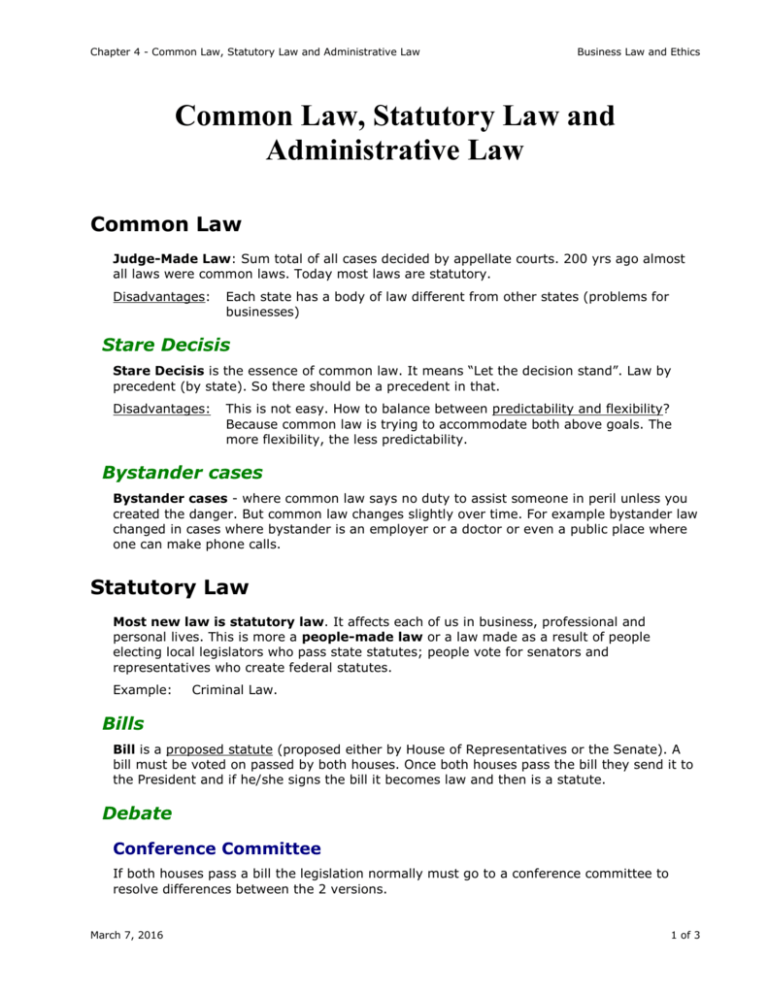
Chapter 4 - Common Law, Statutory Law and Administrative Law Business Law and Ethics Common Law, Statutory Law and Administrative Law Common Law Judge-Made Law: Sum total of all cases decided by appellate courts. 200 yrs ago almost all laws were common laws. Today most laws are statutory. Disadvantages: Each state has a body of law different from other states (problems for businesses) Stare Decisis Stare Decisis is the essence of common law. It means “Let the decision stand”. Law by precedent (by state). So there should be a precedent in that. Disadvantages: This is not easy. How to balance between predictability and flexibility? Because common law is trying to accommodate both above goals. The more flexibility, the less predictability. Bystander cases Bystander cases - where common law says no duty to assist someone in peril unless you created the danger. But common law changes slightly over time. For example bystander law changed in cases where bystander is an employer or a doctor or even a public place where one can make phone calls. Statutory Law Most new law is statutory law. It affects each of us in business, professional and personal lives. This is more a people-made law or a law made as a result of people electing local legislators who pass state statutes; people vote for senators and representatives who create federal statutes. Example: Criminal Law. Bills Bill is a proposed statute (proposed either by House of Representatives or the Senate). A bill must be voted on passed by both houses. Once both houses pass the bill they send it to the President and if he/she signs the bill it becomes law and then is a statute. Debate Conference Committee If both houses pass a bill the legislation normally must go to a conference committee to resolve differences between the 2 versions. March 7, 2016 1 of 3 Chapter 4 - Common Law, Statutory Law and Administrative Law Example: Business Law and Ethics Proposed statute that employers cannot discriminate against race, color, religion, national origin or sex was debated and had to go to the conference committee since one of the houses added “sex “to the statute. Statutory Interpretation Courts are often called upon to interpret a statute. The court follows these steps in order: Plain Meaning Rule Example: Legislative History and Intent Example: The word “religion” has plain meaning rule and courts apply its commonsense definition when there is a dispute. Griggs vs Duke (Griggs won, Duke lost, employer cannot discriminate by having tests that are not required for the job performance) Public Policy Congressional Override A bill vetoed by the President can technically be made into law by the Congress by both houses re-passing the bill each by a 2/3rd majority Example: Restoring of “business necessity” in the Civil Rights Act. The Other Player: Money Example: Raising and using “Soft Money” in election campaigns. Administrative Law Examples: FCC, EPA, IRS, FTC, FAA, FDA (Agencies and Service Commissions) Classification of Agencies Executive-Independent The President has much greater control of the executive agencies since he can fire the agency head at any time. Examples: IRS, FBI, FDA, NGC The other type is Independent Agencies Examples: FCC, FTC, SEC, EPA, NLRB, OSHA What do agencies do? They make rules (legislative and interpretative), they investigate (example: subpoena) and they adjudicate (hearing before administrative law judge, ALJ). Limits on Agency Power Statutory Control The enabling legislation of an agency provides some limits. For example, formal rule making or investigating only certain issues. March 7, 2016 2 of 3 Chapter 4 - Common Law, Statutory Law and Administrative Law Business Law and Ethics Political Control By President, By Congress who controls money Judicial Review Information Control and the Public Freedom of Information Act FOIA – a landmark statute passed in 1966. Gives everyone access to the information that the federal agencies are using. Privacy Act Passed in 1974. This statute prohibits federal agencies from giving information about individuals to other agencies or organizations without written consent. March 7, 2016 3 of 3
